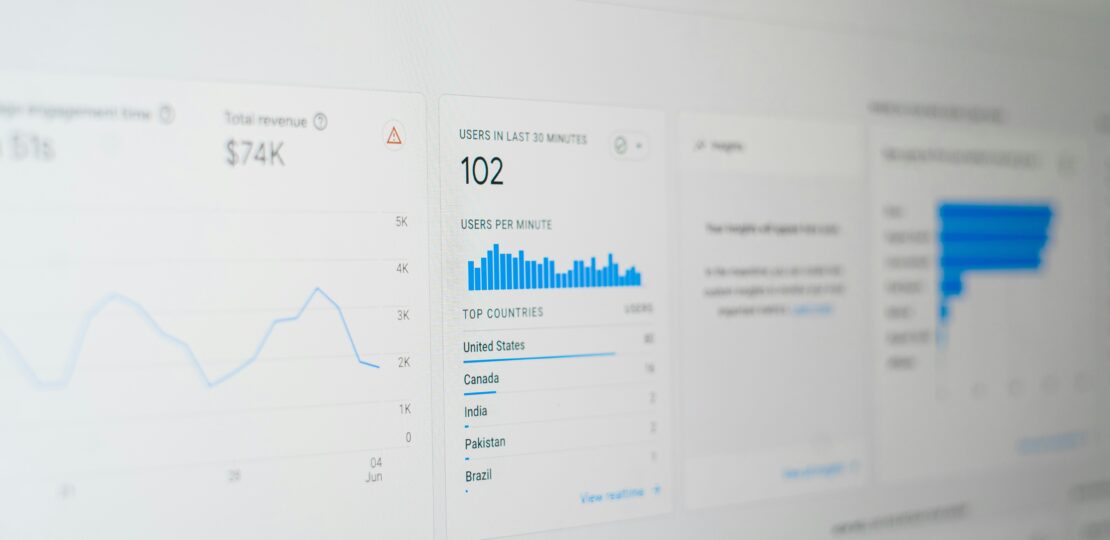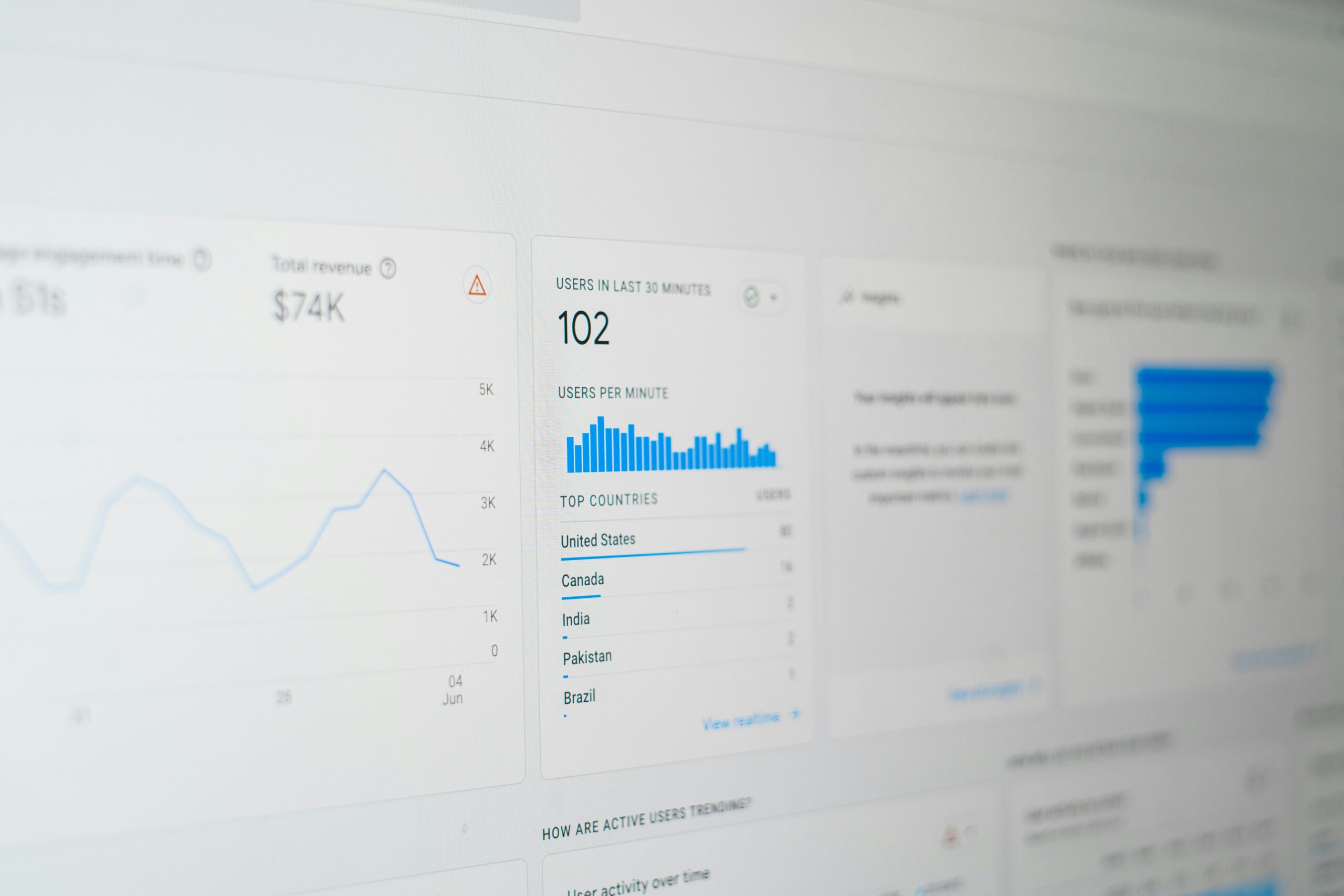Unlocking E-Commerce Success with Google Analytics 4: Advanced Insights for Data-Driven Decisions
October 7, 2025 | by qqvmedia.com


Understanding Google Analytics 4: A New Era in Data Tracking
Google Analytics 4 (GA4) marks a significant evolution in the landscape of web analytics, particularly for e-commerce brands seeking to optimize their digital strategies. Unlike its predecessor, Universal Analytics, GA4 employs an event-driven data collection method. This approach goes beyond the traditional pageview-based model, enabling businesses to capture a more comprehensive view of user interactions across various platforms. By focusing on specific events, such as clicks, transactions, and engagement metrics, e-commerce brands can better understand the customer journey.
One of the most notable features of GA4 is its enhanced focus on user privacy. In response to increasing concerns about data protection and regulatory requirements, GA4 has built-in measures that help businesses track user interactions while also honoring their privacy preferences. This includes the use of anonymized identifiers and greater transparency over data collection practices. As e-commerce brands adapt to changing consumer expectations, these privacy features play a critical role in maintaining trust while still gathering valuable insights.
The architecture of GA4 is designed to provide deeper insights into customer behavior through advanced machine learning capabilities. E-commerce brands can leverage these insights to identify trends, forecast sales, and segment customers more effectively. With GA4’s predictive metrics, businesses can anticipate future customer actions and tailor their marketing strategies accordingly. Furthermore, the integration of cross-platform tracking allows for a holistic view of customer interactions across websites and mobile applications, enabling brands to create cohesive experiences that drive conversions.
In a competitive digital marketplace, understanding how to utilize Google Analytics 4 is essential for e-commerce brands aiming for success. The advanced insights offered by GA4, coupled with its user-centric approach, empower organizations to make informed, data-driven decisions that can substantially enhance their online performance.
Maximizing Insights with Advanced Event Tracking and Predictive Metrics
Google Analytics 4 (GA4) significantly enhances the capabilities of e-commerce businesses by offering advanced event tracking features. One of the defining characteristics of GA4 is its ability to track custom events, allowing businesses to gain a deeper understanding of user interactions on their websites. Custom events can provide crucial insights into user behavior, especially when it comes to micro-conversions. For example, tracking specific actions such as ‘add-to-cart’ clicks or ‘checkout’ initiation enables retailers to pinpoint where users express intent to purchase, ultimately guiding marketing efforts more effectively.
Implementing custom event tracking in GA4 is a straightforward process. It begins with defining the events that matter most to your business; these can range from product views to engagement metrics like video plays. Once defined, these events can be set up through the GA4 interface or through Google Tag Manager, providing flexibility in how data is collected. For instance, by monitoring when users add an item to their cart but do not complete the purchase, businesses can identify potential obstacles in the conversion path and address them through targeted strategies.
In addition to custom event tracking, GA4 features predictive metrics that significantly enhance e-commerce analytics. These metrics allow businesses to anticipate user behavior by analyzing historical data and trends. For example, GA4 can generate predictive audiences based on their likelihood to purchase, thus enabling retailers to retarget high-intent users effectively. By leveraging these insights, businesses can optimize their advertising spend, ensuring that resources are allocated to engage users who are most likely to convert. This advanced capability not only refines targeting strategies but also boosts overall marketing ROI.
Cross-Platform Attribution: Understanding the Customer Journey
Cross-platform attribution has emerged as a crucial component in understanding the modern customer journey, particularly in the context of e-commerce. As consumers engage with brands through multiple devices and platforms, gaining a comprehensive view of their interactions becomes paramount for businesses aiming to optimize their marketing strategies. Google Analytics 4 (GA4) offers advanced capabilities that allow brands to track user behavior across various touchpoints, providing valuable insights into the path that leads to conversions.
By leveraging GA4’s cross-platform tracking features, e-commerce businesses can analyze how customers transition between different devices, such as smartphones, tablets, and desktop computers. This holistic approach enables a clearer understanding of the entire customer journey, revealing patterns in user behavior that might otherwise go unnoticed. For instance, a customer may initially land on a website via a Google search on their mobile device, but later complete a purchase using a laptop. Recognizing this journey is vital for accurately attributing credit to the marketing efforts that contributed to the final sale.
Furthermore, understanding these interactions enhances the ability to identify key touchpoints that influence the customer experience. By pinpointing where customers engage with content, brands can strategize their marketing efforts accordingly, optimizing ad spending and tailoring messaging to align with user needs at various stages of their journey. Implementing effective cross-platform attribution strategies allows e-commerce businesses to refine their conversion funnels significantly and improve customer engagement tactics. In leveraging GA4’s capabilities, brands can ultimately enhance their overall performance in a highly competitive digital landscape.
Case Study: Gymshark’s Journey to Success with GA4
Gymshark, a prominent fitness apparel brand, embarked on its journey to harness the full capabilities of Google Analytics 4 (GA4) to gain deeper insights into user behavior across its app and website. Before implementing GA4, Gymshark faced significant challenges, including high cart abandonment rates and disparities in tracking user engagement on different platforms. The analytical limitations of their previous tracking system prevented them from fully understanding customer journeys and optimizing their channels effectively.
To address these challenges, Gymshark adopted a strategy focused on leveraging GA4’s advanced tracking features. They configured event-driven data models that provided nuanced insights into how customers interacted with their brand across multiple touchpoints. By meticulously analyzing user paths and engagement rates, Gymshark was able to identify critical drop-off points in the purchase funnel. This data-driven approach facilitated targeted interventions that aimed at enhancing user experience.
One of the significant changes Gymshark made was to streamline the checkout process based on insights gathered from GA4. The brand analyzed user interactions and discovered specific pain points contributing to cart abandonment. By addressing these issues, Gymshark implemented a more user-friendly checkout experience, which led to a notable 15% reduction in cart abandonment rates.
In addition to optimizing the checkout process, Gymshark’s analysis revealed that a significant portion of their customers were accessing the website via mobile devices. Armed with this information, they launched a mobile-first marketing campaign that ultimately resulted in an impressive increase in mobile revenue by $2 million in 2024. This case study illustrates how Gymshark effectively utilized GA4 to transform data into actionable strategies, driving tangible business outcomes in the highly competitive e-commerce landscape.
RELATED POSTS
View all


